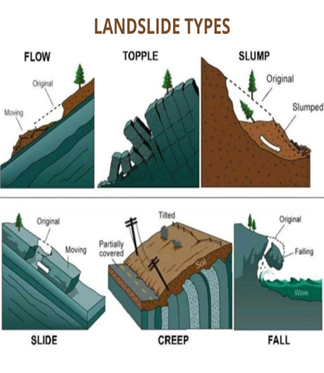BEFORE THE LANDSLIDE
Relevance
- GS 1 – Geography;
- GS 3 – Environment and Ecology
Context
- The recent devastating landslide in Wayanad, Kerala, highlights the critical need to balance development with environmental sustainability.
- The region’s unique geography, combined with unplanned construction and tourism-related activities, has led to an increased frequency of such natural disasters.
The Geography of Wayanad
- Ecological Sensitivity: Wayanad, located in the lush Western Ghats, is known for its rich biodiversity and picturesque landscapes. The district is crisscrossed by rivers like Kabini and Chaliyar and is home to various biological reserves, wildlife sanctuaries, and national parks.
- Geological Instability: The region’s topography, characterized by steep slopes and heavy rainfall, makes it particularly prone to landslides. The warming of the Arabian Sea and resultant heavy rains exacerbate this vulnerability. According to experts, the instability of the slopes and the unique geological features of the Western Ghats contribute to the frequency of such disasters.
Lessons from the Past
- Historical Context: Wayanad has a history of landslides, with significant events recorded in 2018 and earlier. A study by the Kerala State Disaster Management Authority identified the district as highly prone to landslides, necessitating stringent regulatory measures.
- Environmental Reports: Research by the Indian Institute of Science indicated that Wayanad lost 16.13 sq km of forests between 1973 and 2016, primarily due to agricultural expansion and urbanization. Such deforestation has severely impacted the region’s natural resilience to heavy rainfall and floods.
The Tragedy Unfolds
- The recent landslide in Wayanad, triggered by heavy rains, resulted in the destruction of homes and infrastructure, with several people trapped under debris. The disaster claimed over 300 lives and left many more missing.
- The landslide not only caused loss of life but also disrupted the local economy. Agricultural activities, a primary source of livelihood for many residents, were severely affected.
- Reasons for the Tragedy:
- Unplanned Construction: The surge in construction activities, without proper assessment of the region’s carrying capacity, has significantly altered Wayanad’s natural landscape. Roads have been built, and large-scale quarrying activities undertaken, further destabilizing the region.
- Tourism Boom: Wayanad’s transformation into an eco-tourism hotspot has led to rampant construction of resorts and tourism-related infrastructure. These developments, often undertaken without environmental clearance, have put additional pressure on the fragile ecosystem.
- Deforestation: Significant deforestation to make way for agricultural and urban development has exacerbated soil erosion, reducing the land’s ability to absorb heavy rainfall and increasing the risk of landslides.
- Climate Change: The warming of the Arabian Sea has led to changes in rainfall patterns, with increased intensity and frequency of heavy rains. This has resulted in more frequent landslides and floods in the region.
- Non-Sustainable Agricultural Practices: The shift from traditional to commercial agriculture has led to the extensive use of chemical fertilizers and pesticides, which have degraded the soil and reduced its capacity to retain water.
- Ignoring Environmental Regulations: Despite the recommendations of environmental reports and committees like the Gadgil Committee, there has been a lack of stringent enforcement of environmental regulations, allowing for unchecked development in ecologically sensitive areas.
Sustainable Solutions
- Land-Use Planning:
- Promoting Agroforestry: Encouraging agroforestry practices can help restore degraded lands, enhance biodiversity, and improve soil stability.
- Reforestation and Afforestation: Large-scale reforestation and afforestation efforts are essential to rebuild natural barriers against landslides and floods.
- Soil and Water Conservation: Implementing soil and water conservation techniques such as contour plowing, terracing, and check dams can mitigate soil erosion and enhance water retention.
- Regulatory Measures: Strict enforcement of environmental regulations, particularly for construction and quarrying activities, is crucial. Comprehensive land-use plans that account for the region’s carrying capacity can help balance development with environmental conservation.
- Monitoring and Enforcement: Strengthening the monitoring and enforcement of existing environmental laws to ensure compliance with sustainable practices.
- Community Engagement: Involving local communities in planning and decision-making processes to ensure that development projects are aligned with the region’s ecological needs and socio-economic realities.
Recent Data
ESA and Gadgil Committee
|
Conclusion
The Wayanad landslide serves as a stark reminder of the consequences of unplanned development in ecologically fragile regions. Sustainable development practices, guided by scientific research and environmental considerations, are essential to prevent such tragedies in the future. By respecting the region’s carrying capacity and implementing stringent regulatory measures, it is possible to ensure the safety and well-being of both the environment and the local communities.
Mains Question
Discuss the impact of unplanned development on the environment and local communities in ecologically sensitive regions like Wayanad. Suggest sustainable measures to prevent such disasters in the future. (250 words)
Source: The Indian Express




